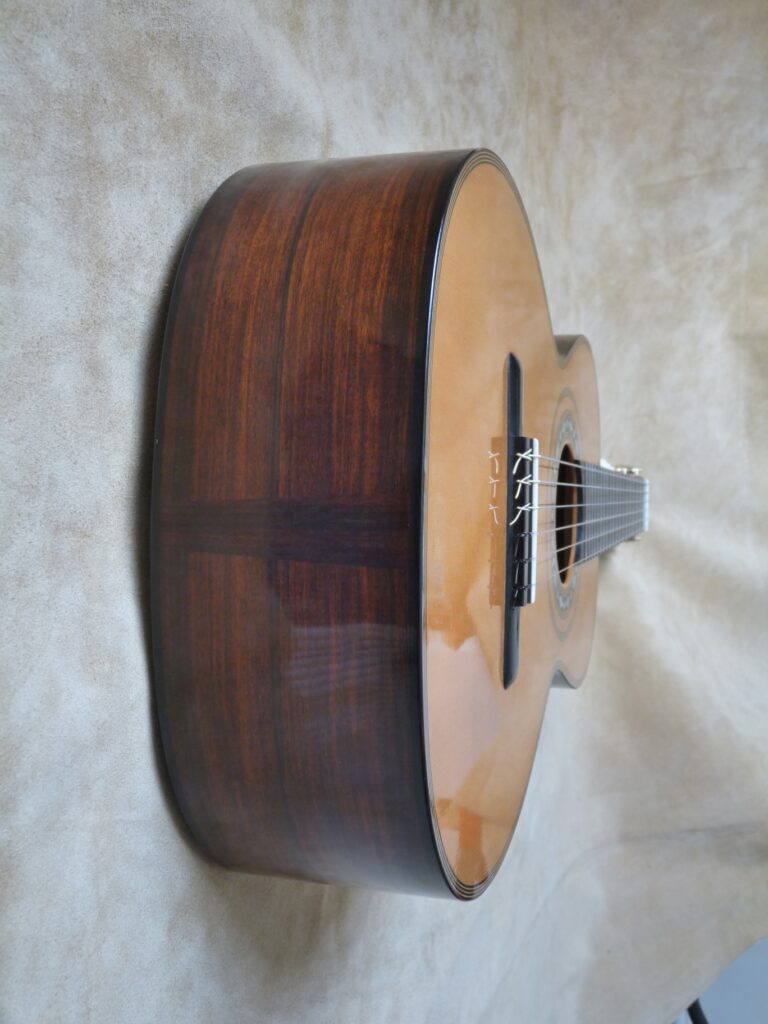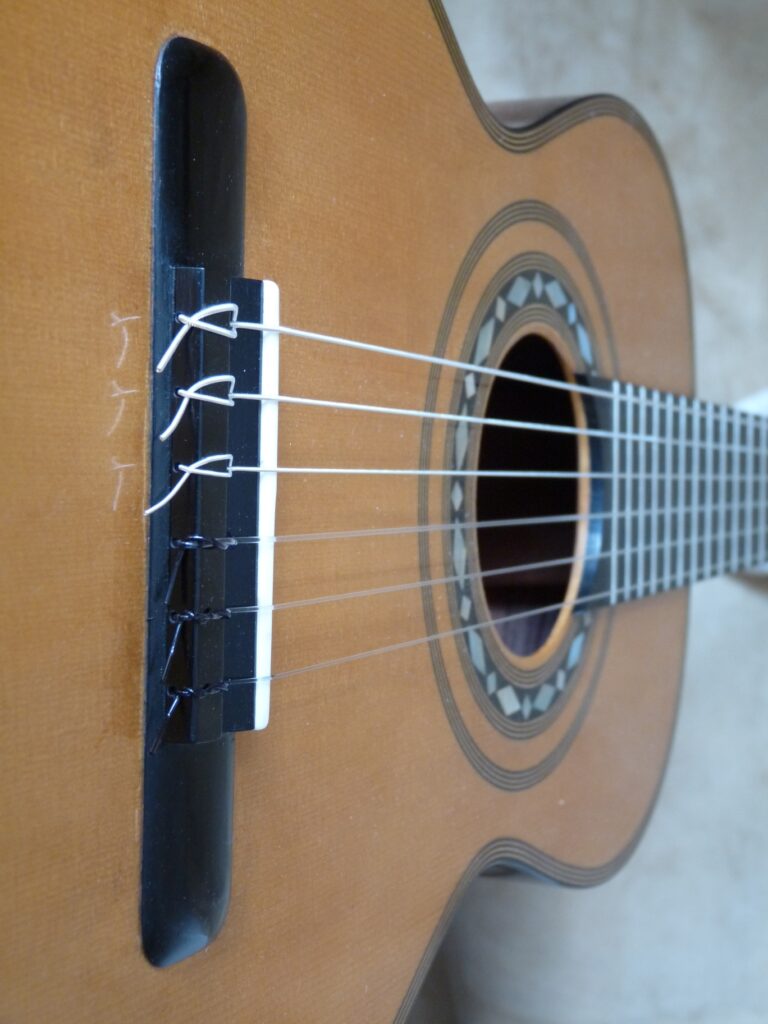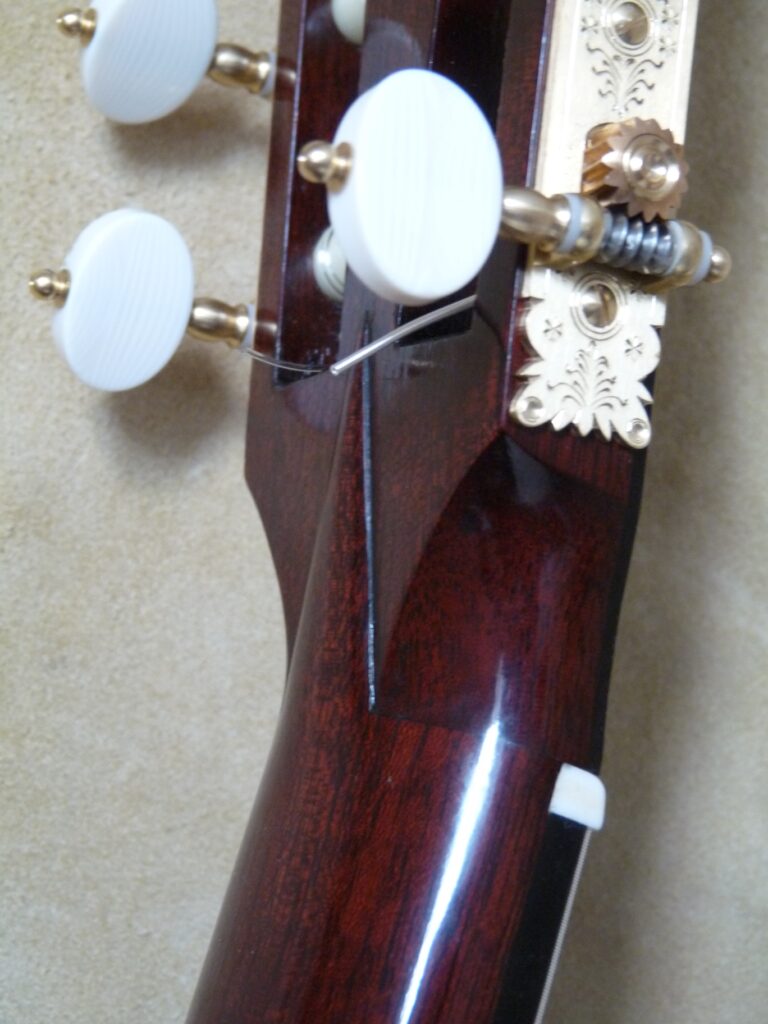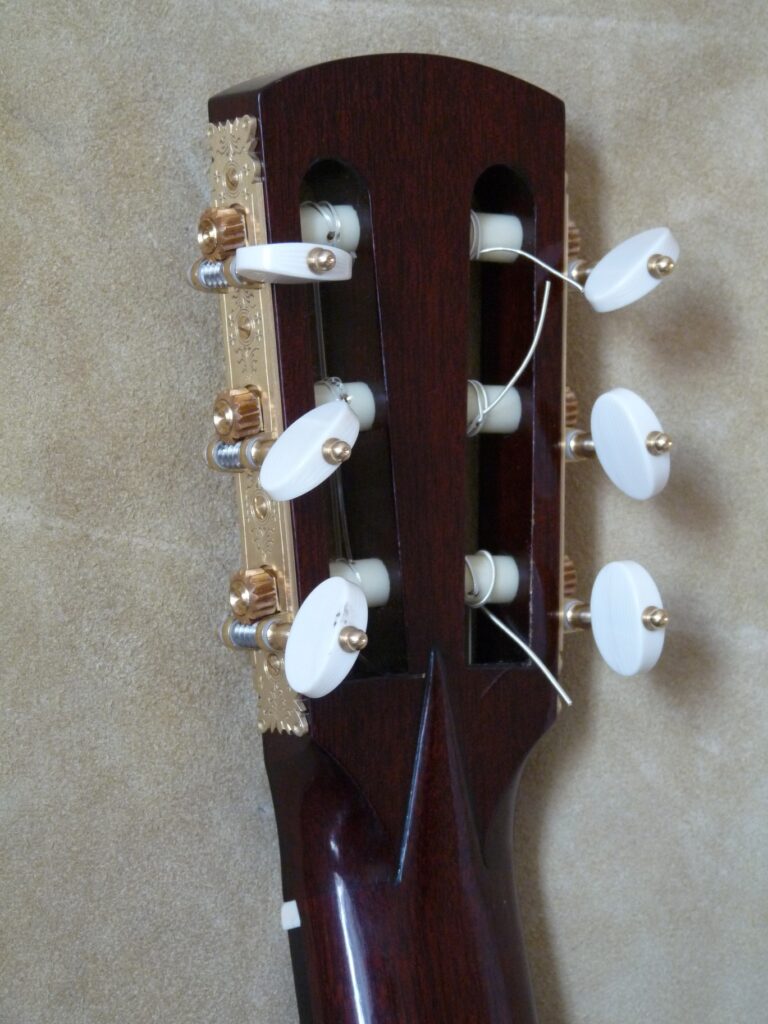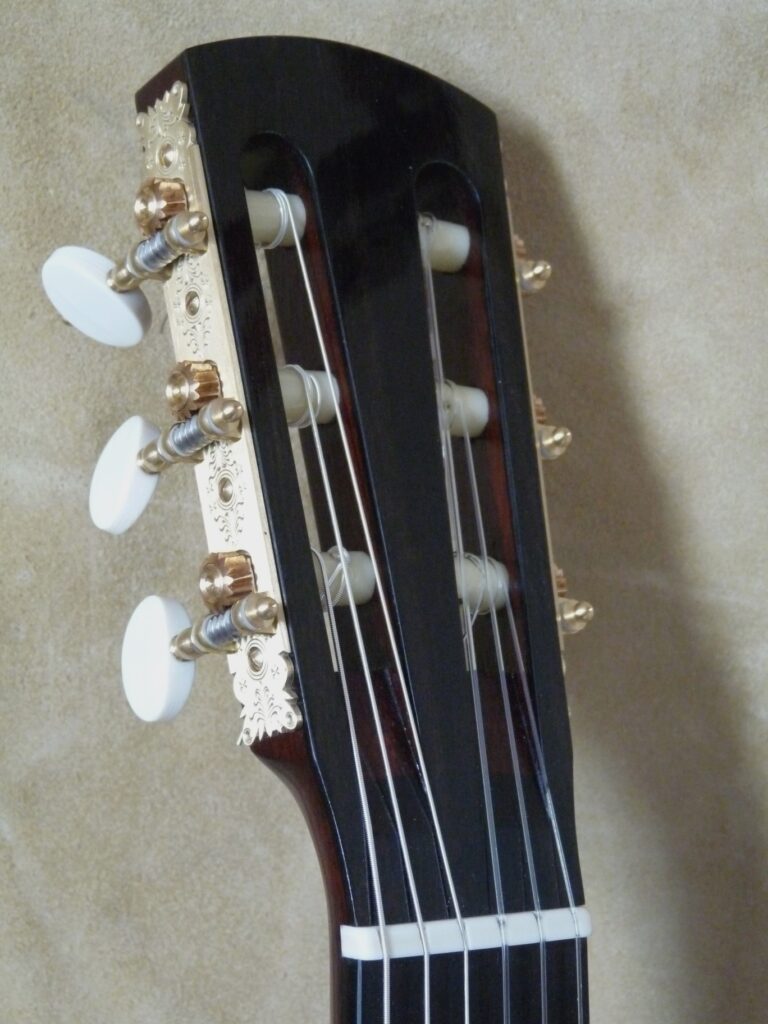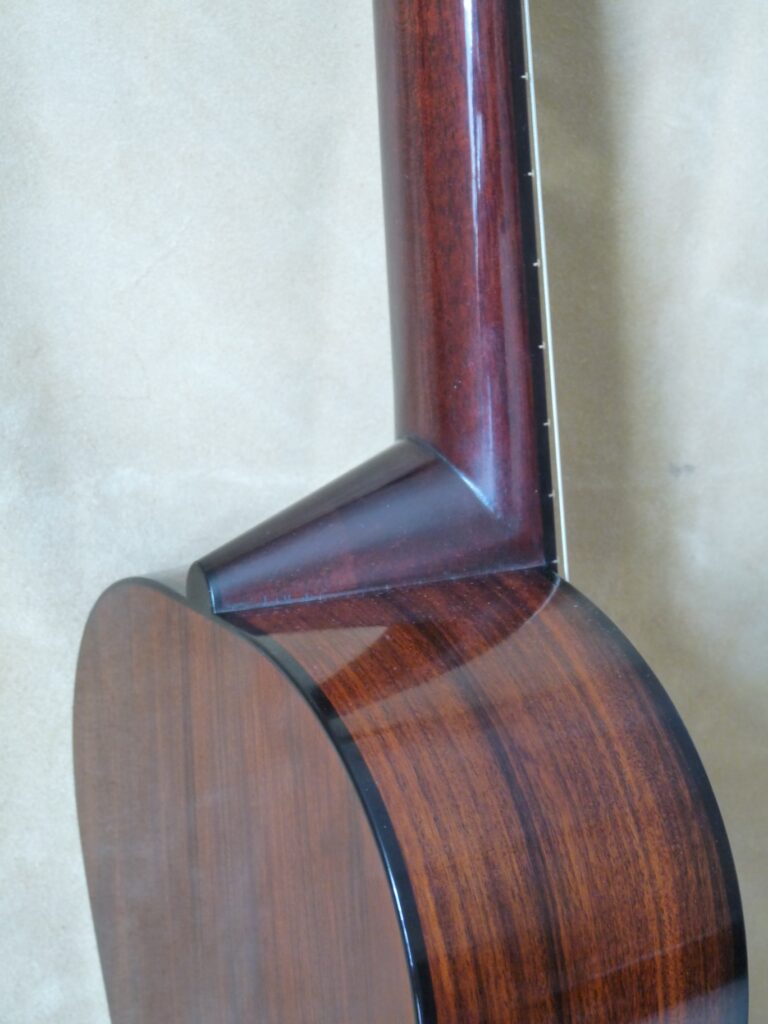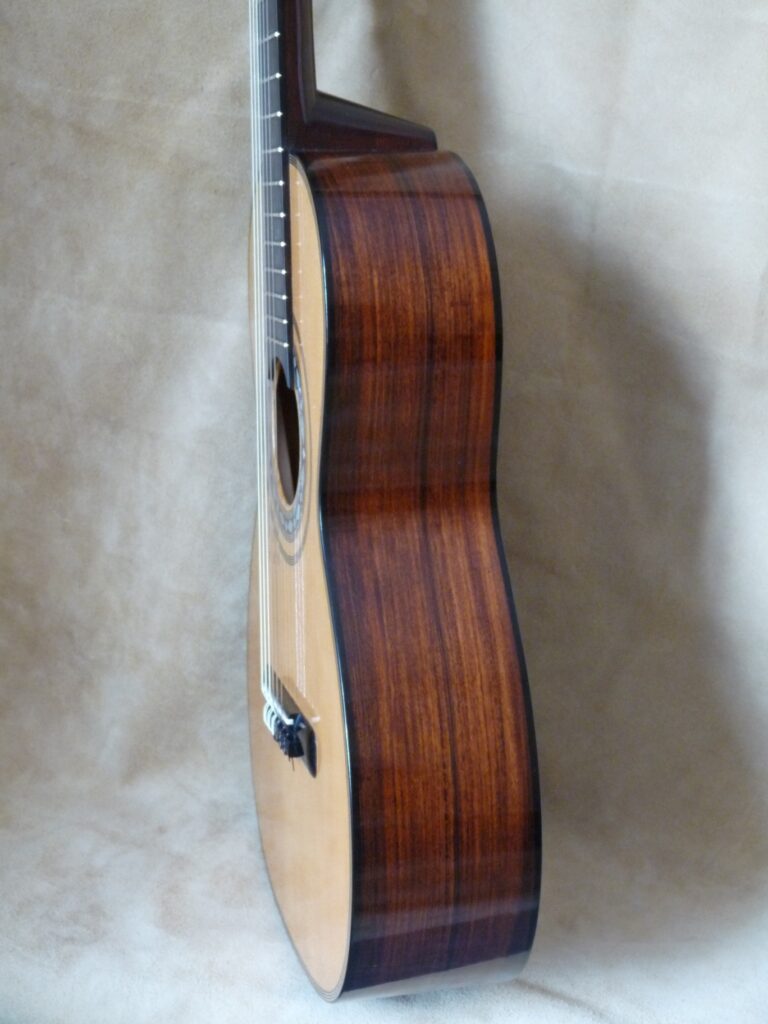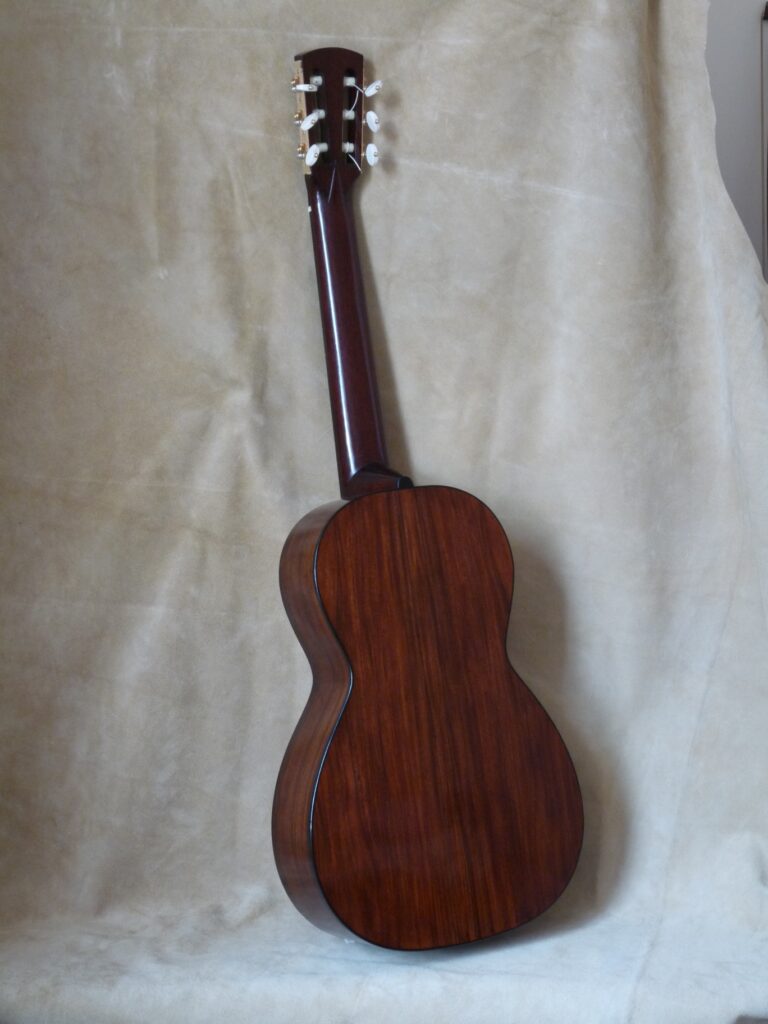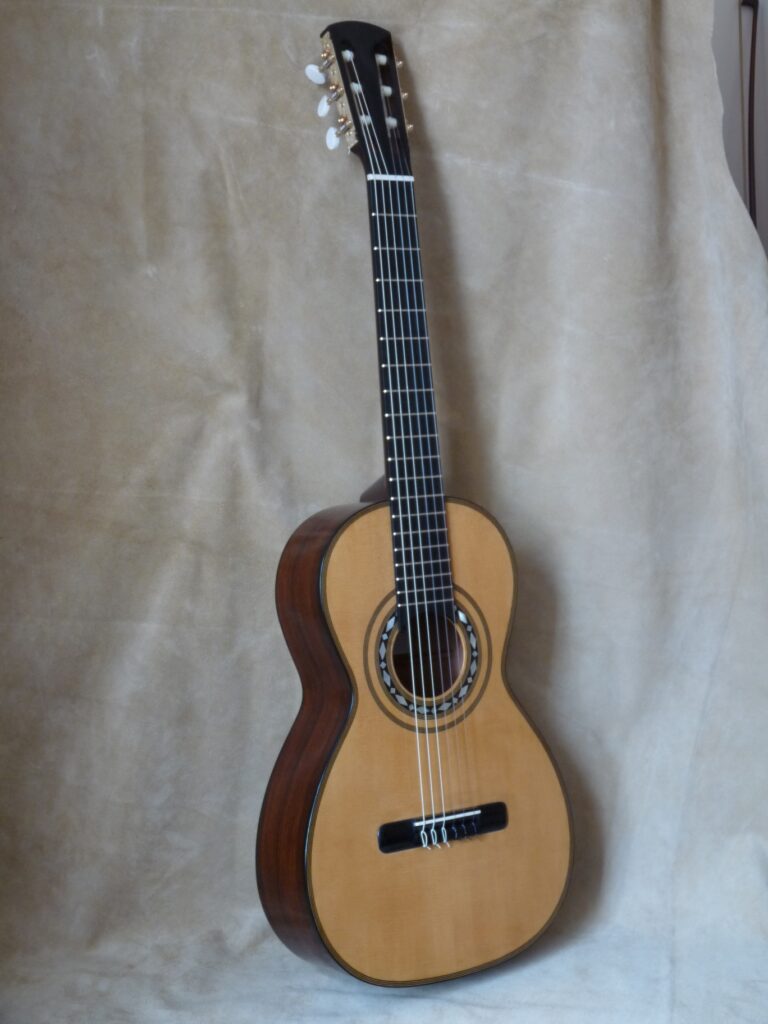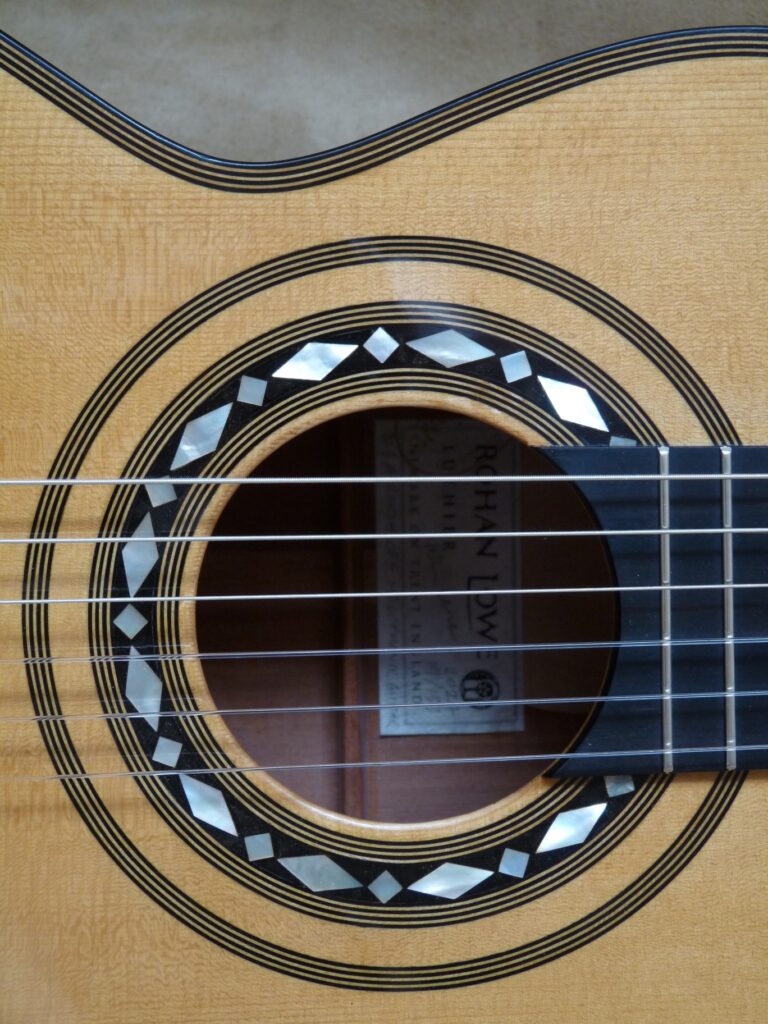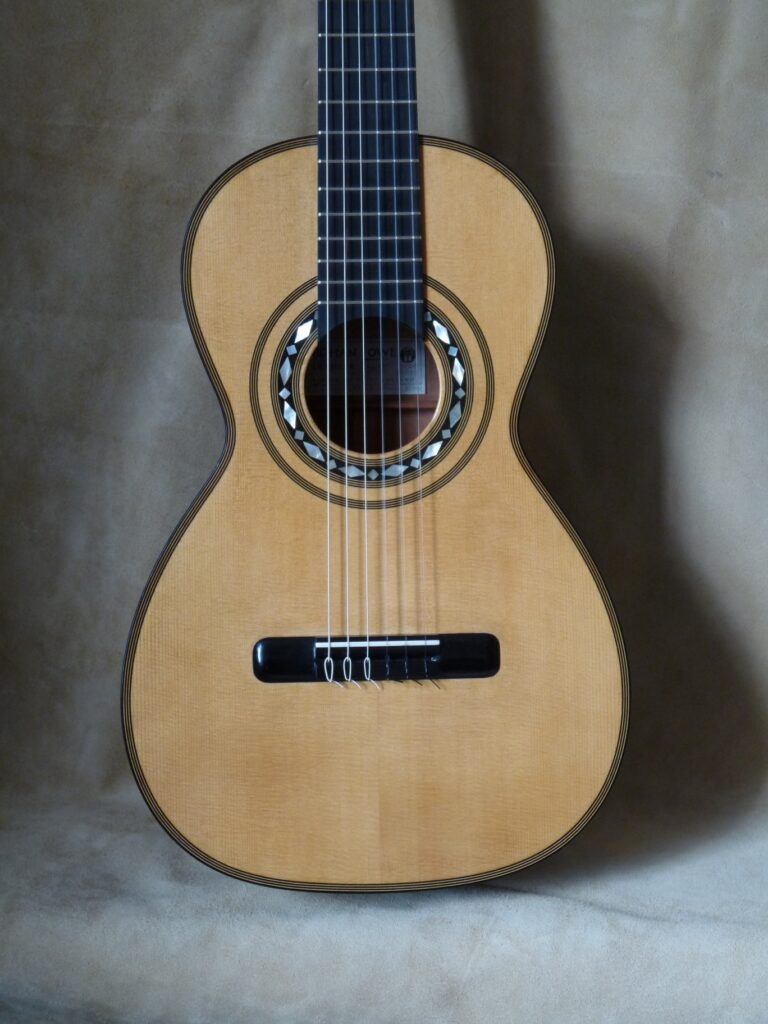Last year ( 2024) I built a copy of the above 19th century guitar, made in London circa 1840, which I am keeping for demonstration. I already used the body shape for Rob MacKillop’s 13 string baroque guitar-lute. And I have just made a steel-string version of the Melophonic guitar for a friend who liked the design. In fact, the body shape and size is very similar to a Martin guitar of the same period.
Dominique and Arnoud Roudhloff were French makers trained in Mirecourt by their father Francois, who was himself an excellent guitar maker as well as a violin maker. The brothers moved to London in the 1830s and set up shop.
In 2022 I was approached by Edinburgh based lutenist and multi-string guitarist Rob MacKillop to do some work on a D and A Roudhloff guitar that he’d recently acquired. I readily agreed as I was keen to study it so that I could make a copy.
It was the Roudhloff brothers’ X-brace design for supporting the front that had inspired me to try that bracing method for the classical guitar back in 2009. Every guitar maker is familiar with the X-brace pattern, as it has been used throughout the 20th century and beyond for steel-string guitar production, but almost universally ignored for classical guitar making since the Roudhloff brothers’ day. Prior to 2009, apart from some early experimentation, I had used the Spanish fan-bracing method almost exclusively. Although I’d seen a number of the brothers’ original guitars over the years, I hadn’t had the opportunity to study their Melophonic model before. So Rob and I made an amicable agreement that I would sort out his guitar in exchange for keeping it a while.
My copy has a spruce front, of course, like the original. I used recycled mahogany for the back, but instead of Brazilian rosewood, I veneered it with Santos rosewood and solid Santos rosewood ribs. I have tried to produce a faithful copy, although I didn’t veneer the neck – I used a piece of solid Cuban mahogany, with the long tapered V-joint head. And it’s fitted with some historically appropriate-looking, reverse-geared tuning machines by Nicolo Alessi.
The photos below are of my copy. The scale-length is 630mm. To see photos of the original and more information about how it is made, click here.
